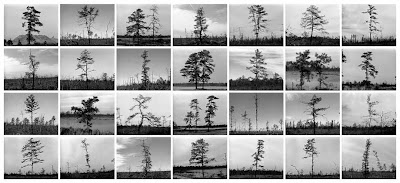
"British guitarist Fred Frith moved to N.Y.C. in 1979, and within a year had formed the improv rock trio Massacre with bassist Bill Laswell and drummer Fred Maher. The group released Killing Time in 1981 and then called it quits a year later. Frith and Laswell rejoined, this time with drummer Charles Hayward, in 1998 to record an album in the same vein, under the Massacre name. Funny Valentine was released on the Tzadik label later that same year. In 2001 the group released Meltdown, a six-track set recorded at Robert Wyatt's Meltdown Festival in London in June 2001, followed by 2007's Lonely Heart, which was recorded live at two festivals in Europe in January and June 2003."
allmusic
W - Massacre
YouTube: Massacre (2001) 1:04:54



















.jpg)







